Vector worked examples
Example 1
Write in terms of `a` and `b` the vector `vec (BC)`
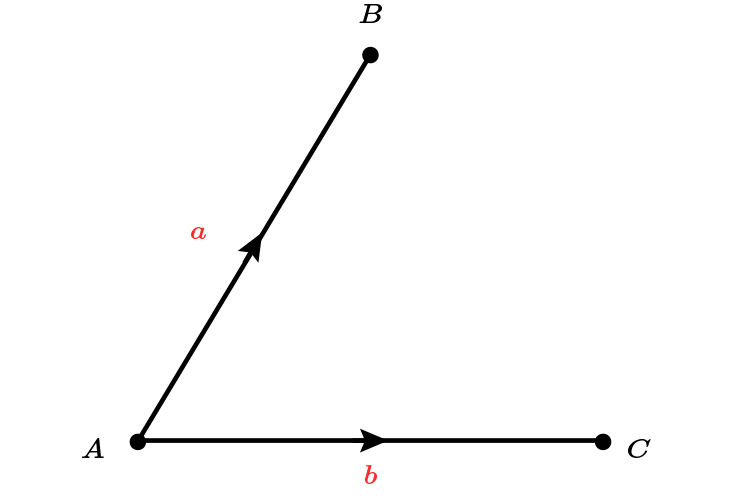
Answer as follows:
Think of this as two separate vectors
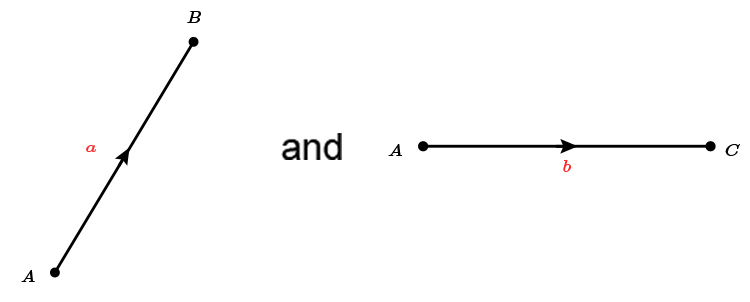
Therefore
`vec (BC)=-a+b`
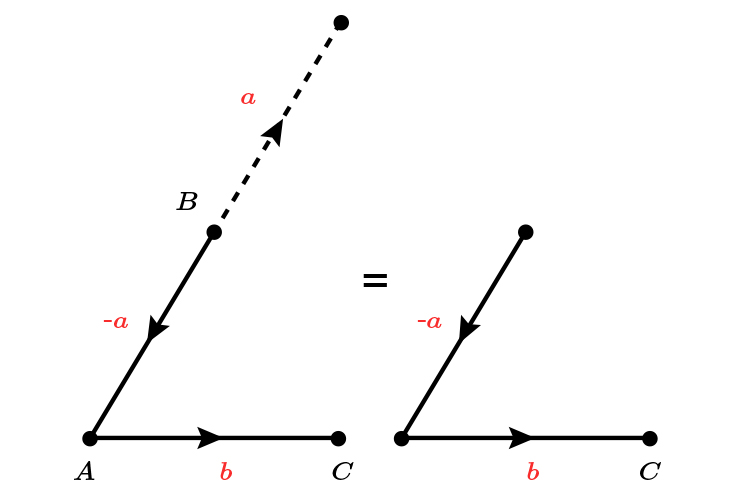
Or `vec (BC)=b-a`
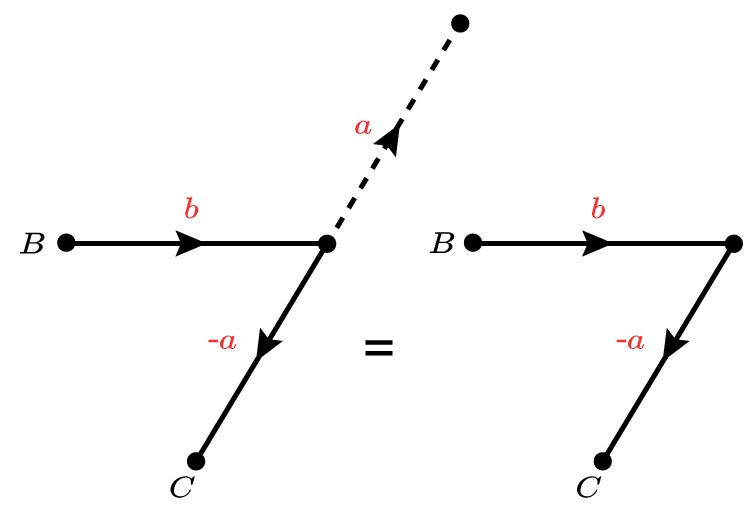
Example 2

`vec (AB)=m`
`vec (AD)=n`
The point `C` on `BD` is such that:
`BC:CD=1:3`
i. Find `D` to `B` in terms of `n` and `m`
Think of this as the separate vectors
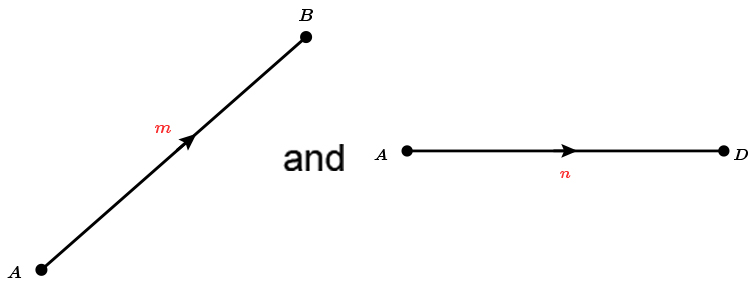
Therefore
`vec (DB)=-n+m`
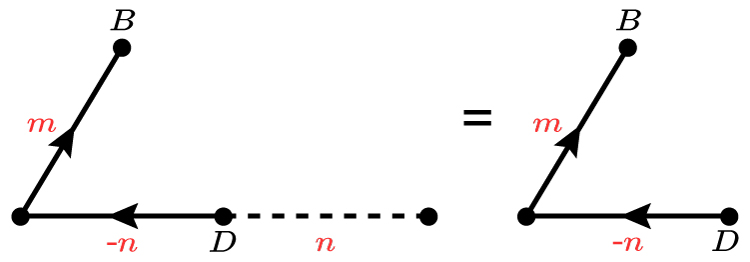
Or `vec (DB)=m-n`

`vec (DB)=-n+m=m-n` (The latter is chosen because it's neater)
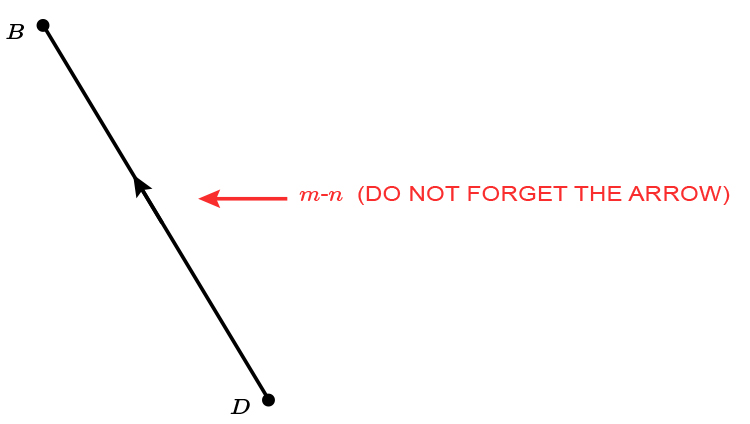
ii. Find `vec (AC)` in terms of `m` and `n`
remember
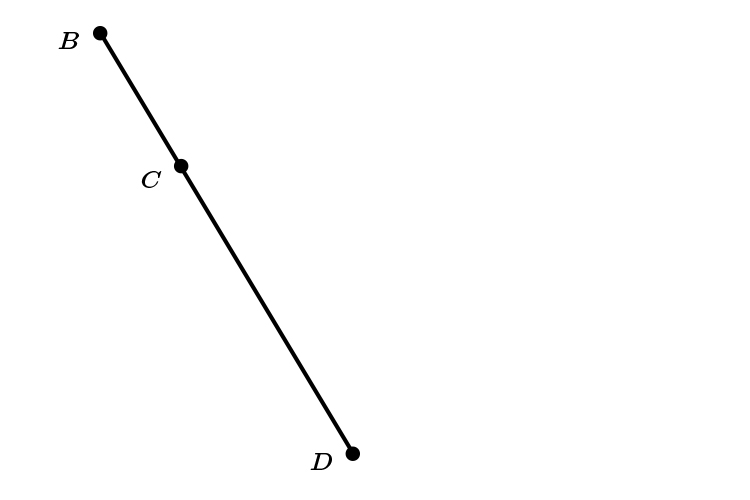
We are told `BC:CD=1:3`
this means
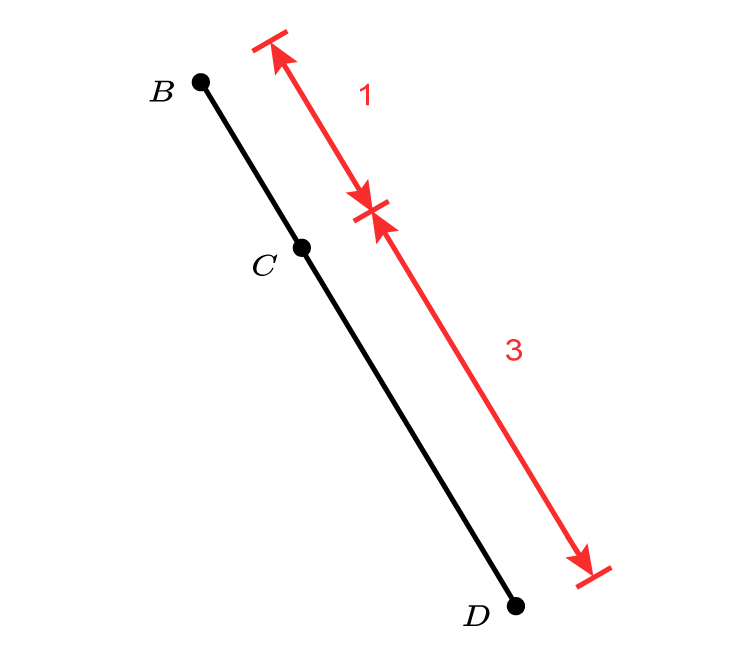
which also means
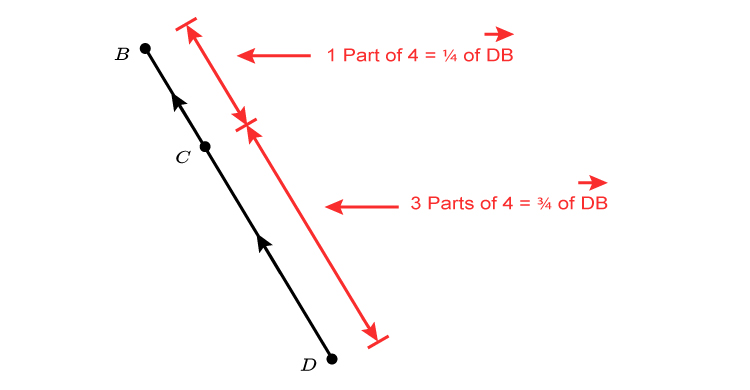
which also means
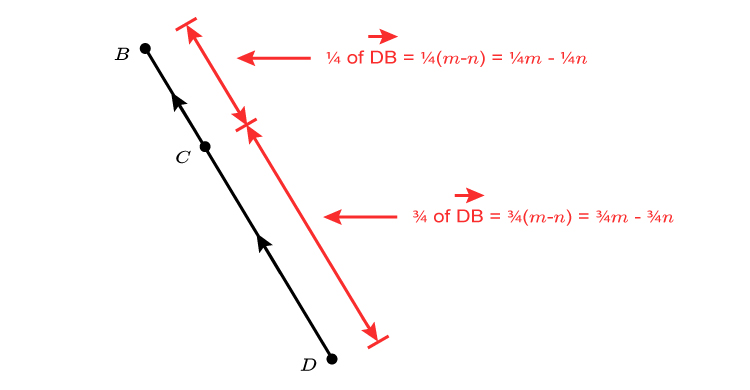
So if we redraw the original diagram
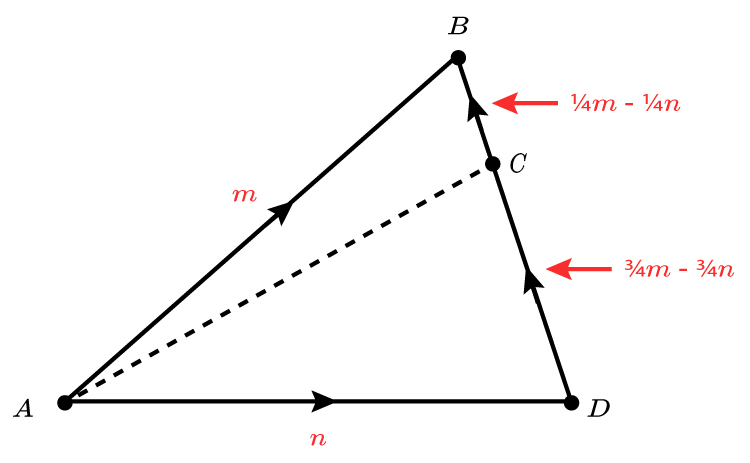
`vec (AC)` in terms of `m` and `n` are:
`vec (AC)=n+3/4m-3/4n`
`vec (AC)=3/4m+1/4n`
OR
`vec (AC)=m-(1/4m-1/4n)`
`vec (AC)=m+(-1times(1/4m-1/4n))`
`vec (AC)=m-1/4m+1/4n`
`vec (AC)=3/4m+1/4n`
Both get the same answer (as they should)
Answer:
`vec (AC)` in terms of `m` and `n=3/4m+1/4n`
Example 3
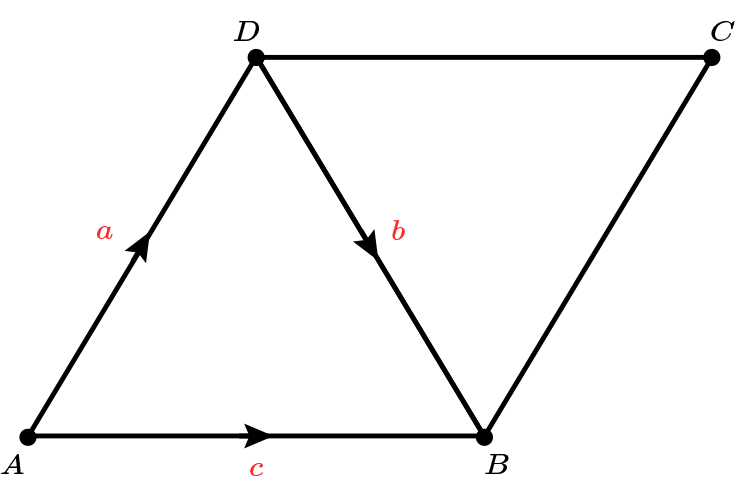
If `AD` is parallel to `CB` and `AB` is parallel to `DC`, write in terms of `a` and `b` the vectors `vec (BC)` and `vec (BA)`
Answer as follows:
Think of this as separate vectors
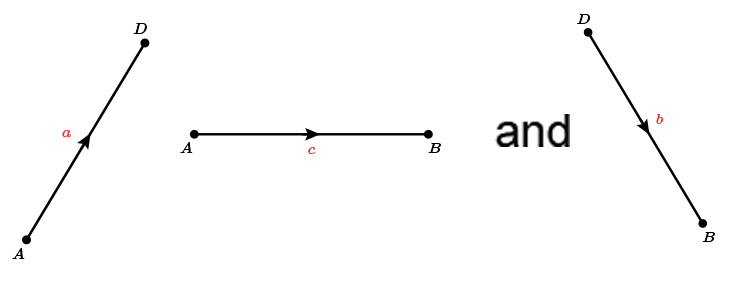
Therefore
`vec (BC)=a`
and
`vec (BA)=-c`




